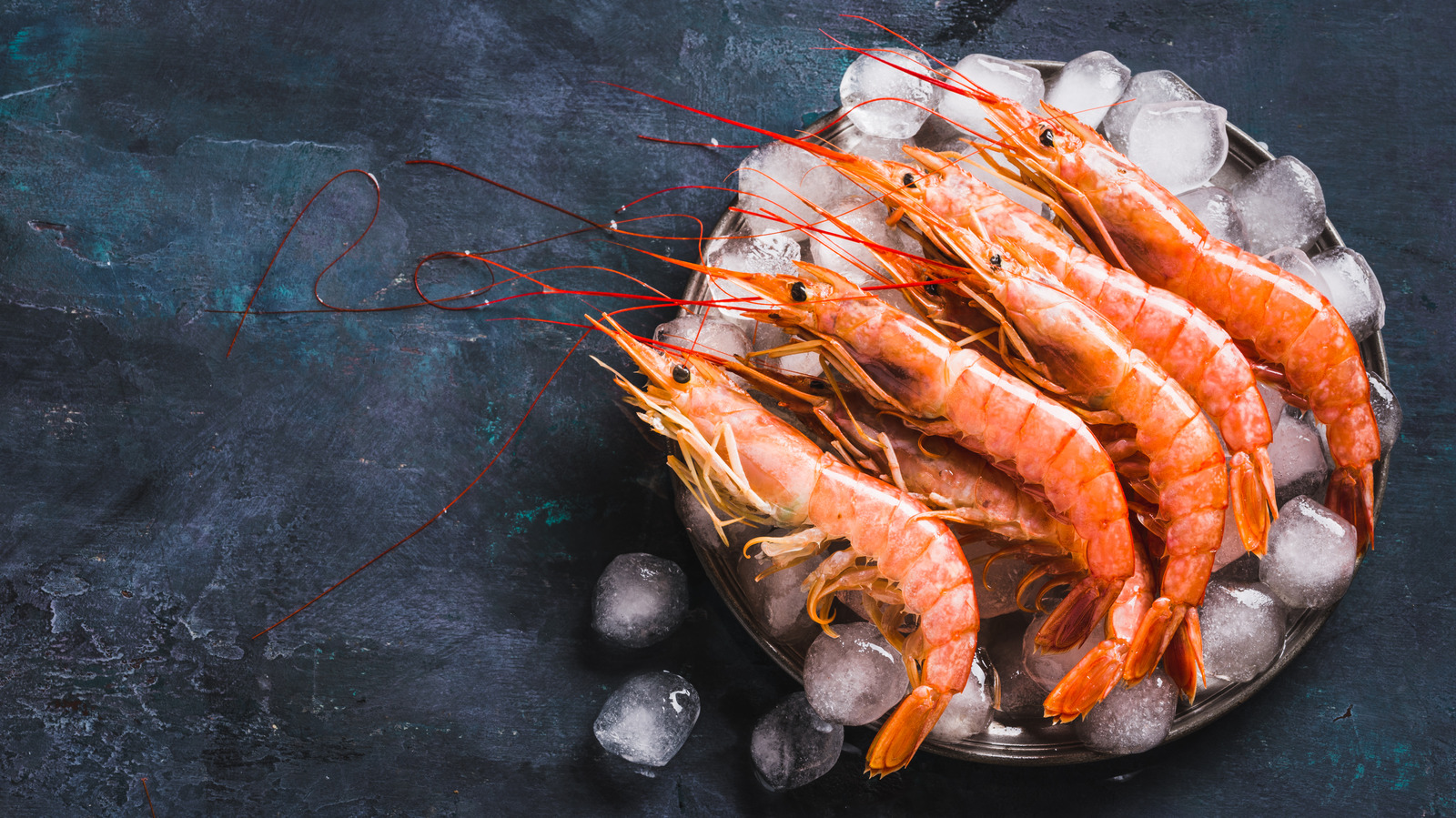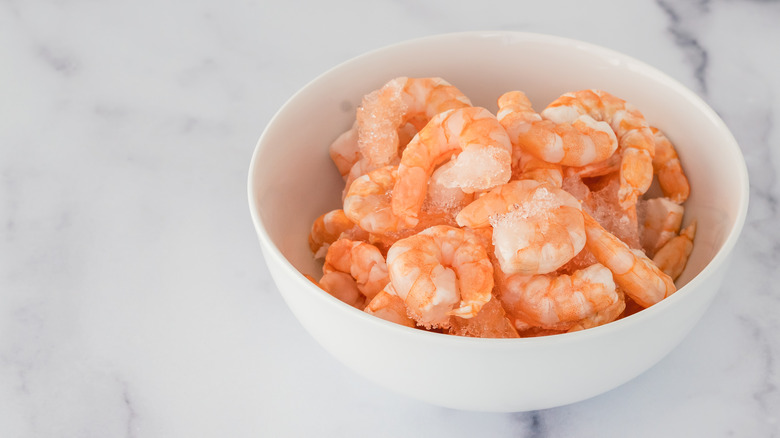Hey there seafood lovers! Today I’m gonna share my tried-and-tested method for freezing shrimp in water. As someone who loves cooking with shrimp but hates paying premium prices at the store, I’ve perfected this technique over years of trial and error Let me tell you – it’s a game changer!
Why Freeze Shrimp in Water?
Before we dive into the how-to, let’s talk about why water-freezing is amazing for shrimp:
- Prevents freezer burn (nobody wants that nasty taste!)
- Keeps shrimp fresh longer (up to 6 months!)
- Maintains that fresh-caught texture we all love
- Super budget-friendly when shrimp’s on sale
- Makes defrosting way easier
What You’ll Need
Let’s gather our supplies:
- Fresh shrimp (duh! )
- Clean, cold water
- Freezer-safe containers or bags
- Large bowl for cleaning
- Colander
- Paper towels
- Salt (optional but recommended)
Step-by-Step Guide to Freezing Shrimp in Water
1. Prep Your Shrimp
First things first – we gotta prep those little guys properly
- Remove heads if still attached
- Peel shells (unless you prefer shell-on)
- Devein the shrimp (that dark line’s gotta go!)
- Rinse thoroughly under cold water
- Pat dry with paper towels
Pro tip Keep shells on if you’re planning to use them for stock later!
2. Container Selection
Pick your freezing vessel wisely:
- Freezer-safe plastic containers
- Heavy-duty freezer bags
- Mason jars (leave headspace!)
Important: Whatever you choose, make sure it’s completely clean and dry.
3. The Water Method
Here’s where the magic happens:
- Place cleaned shrimp in your chosen container
- Fill with cold water until shrimp are completely covered
- Leave about 1/4 inch headspace for expansion
- Optional: Add 1 tsp salt per cup of water (helps preserve texture)
- Seal container tightly, removing as much air as possible
4. Freezing Process
Now let’s get those shrimpies frozen:
- Place containers in freezer
- Make sure they’re sitting flat
- Set freezer to 0°F or below
- Let freeze completely (usually takes 2-4 hours)
Storage Duration Table
| Storage Method | Maximum Storage Time | Quality Best Before |
|---|---|---|
| Water + Salt | 6 months | 4 months |
| Water Only | 4-5 months | 3 months |
| No Water | 3 months | 2 months |
Thawing Tips
When you’re ready to use your frozen shrimp:
- Move container to fridge (24 hours before use)
- OR quick-thaw under cold running water (30 mins)
- NEVER use hot water or microwave (unless you want rubber bands!)
Common Mistakes to Avoid
We all make mistakes, but here’s what NOT to do:
- Don’t refreeze thawed shrimp
- Avoid using warm water for freezing
- Don’t freeze without cleaning first
- Never stack containers until completely frozen
- Don’t forget to label with date!
My Personal Tips (That Nobody Tells You!)
After years of freezing shrimp, here’s what I’ve learned:
- Size Matters: Freeze similar-sized shrimp together for even thawing
- Portion Control: Freeze in meal-sized portions to avoid thawing too much
- Salt Secret: A tiny pinch of salt in the water makes a HUGE difference
- Container Hack: Plastic containers work better than bags for long-term storage
- Quality Check: If shrimp smell fishy before freezing, don’t bother – they’re already going bad
When to Skip Water Freezing
Sometimes, water freezing isn’t the best choice:
- When freezing for less than a month
- If you’re short on freezer space
- When freezing already cooked shrimp
- If planning to use for certain recipes (like dry-rub preparations)
Signs Your Frozen Shrimp Have Gone Bad
Watch out for these red flags:
- Freezer burn (white, dry patches)
- Strong fishy smell when thawed
- Slimy texture after thawing
- Discoloration or dark spots
- Ice crystals inside the package
Recipe Ideas for Your Frozen Shrimp
Once thawed, try these amazing dishes:
- Quick stir-fry with veggies
- Classic shrimp scampi
- Garlic butter shrimp
- Shrimp tacos
- Seafood pasta
Final Thoughts
Freezing shrimp in water is seriously one of the best ways to preserve these delicious crustaceans. While it might seem like extra work compared to just tossing them in a freezer bag, trust me – the results are worth it! The water method has saved me tons of money and kept my shrimp tasting fresh for months.
Remember, the key to success is starting with fresh shrimp and being meticulous about cleaning and storage. Follow these steps, and you’ll have perfect shrimp ready whenever you need them!
Got any questions about freezing shrimp? Drop ’em in the comments below! I’d love to hear about your experiences too. Happy freezing, folks! ❄️
FAQ Section
Q: Can I freeze cooked shrimp in water?
A: You can, but I don’t recommend it. Cooked shrimp are better frozen without water.
Q: How long does it take for shrimp to freeze in water?
A: Usually 2-4 hours for complete freezing, but I leave them overnight just to be sure.
Q: Can I use tap water for freezing?
A: Yes, but filtered water is better as it contains fewer impurities.
Q: What’s the best container size for freezing shrimp?
A: I prefer 2-cup containers – perfect for meal-sized portions!
Remember to always trust your instincts – if something seems off about your frozen shrimp, better safe than sorry! Now go forth and freeze those shrimp like a pro!

How to freeze shrimp in water

To freeze shrimp using this method, first remove the heads if they are still attached, but keep the shells and tails intact. Place the shrimp in a quart container and fill it with enough cold water to submerge them. However, be sure to leave sufficient room for the water to expand during freezing, as you dont want the lid to pop off or the container to crack. The reason this method works so well is because it completely protects the shrimp from air exposure, which is responsible for causing freezer burn and altering the foods taste and texture.
Storing your shrimp this way should maintain their flavor and texture for up to six — and if youre lucky, seven — months. When youre ready to use them, remember that youll have a large block of ice to thaw. Place the container in a large bowl and set it in the refrigerator, giving it plenty of time to melt. With this in mind, its a good idea to use smaller containers. This ensures both quicker freezing of the shrimp and water as well as less ice to melt when youre ready to defrost.
